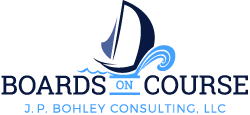Tip #29 Four Steps for Being an Accountable Board
The four steps for being an Accountable Board are:
- Identify your organization’s key stakeholders or owners.
- Engage in ongoing two-way communication with them.
- Incorporate what you learn into board discussions and decision-making.
- Report back to your key stakeholders or owners about organizational performance.
Identify Your Organization’s Key Stakeholders or Owners. Key stakeholders or owners are those people on whose behalf your board governs and to whom your board is accountable. Examples of such stakeholders or owners may be the following: for a publicly traded corporation, the shareholders; for a membership organization, the members; for a governmental entity, the general public of the district served by that governmental entity, and for a non-profit organization, the people of the geographic area served by the organization who support the organization’s mission.
Engage in Ongoing Two-Way Communication with Them. Once you have identified your organization’s key stakeholders or owners, you can develop a communication plan. Such a plan can identify perhaps two communication activities per year that might work for gaining information from a sample of the total identified population of key stakeholders or owners or from demographic segments of this population. For example, a telephone or web-based survey can be used for the total population. Focus groups or community meetings can be arranged for different geographic locations, different socioeconomic groups, racial and ethnic groups, older persons, religious groups, etc. – whatever subgroups make sense for reaching the diverse population comprising your organization’s key stakeholders or owners. What can you talk about? Community needs that might be able to be met by your organization. Specific groups with pressing needs. Specific results to be produced by your organization for those in need. Priorities. And, it’s important to let your key stakeholders or owners know what you have learned and what you plan to do with what you have learned.
Incorporate What You Learn into Board Discussions and Decision-Making. Take care to record, organize, and summarize what you learn from your communication activities. Use this information to inform your board meeting agendas and your discussions and decision-making about your organization’s purpose, its reason for being, the contribution that your organization can make to a better world by making a positive difference in the lives of the people your organization serves.
Report Back to Your Key Stakeholders or Owners about Organizational Performance. Provide information to your key stakeholders or owners about your organization’s performance – not just numbers of people served, activities engaged in by your organization, and dollars spent but data about the specific results that are being produced by your organization, how people’s lives are being positively impacted.
Through a brief board training session, I can help your board explore this four-step system for being an Accountable Board.
As mentioned previously, this four-step system for being an Accountable Board is part of the Policy Governance® system but it may be implemented by any board interested in being an accountable board whether it embraces the total Policy Governance® system or not. For more information about the Policy Governance® system, please go to www.BoardsOnCourse.com/policy-governance.
To read other Tips for Effective Boards, click www.BoardsOnCourse.com/blog.
